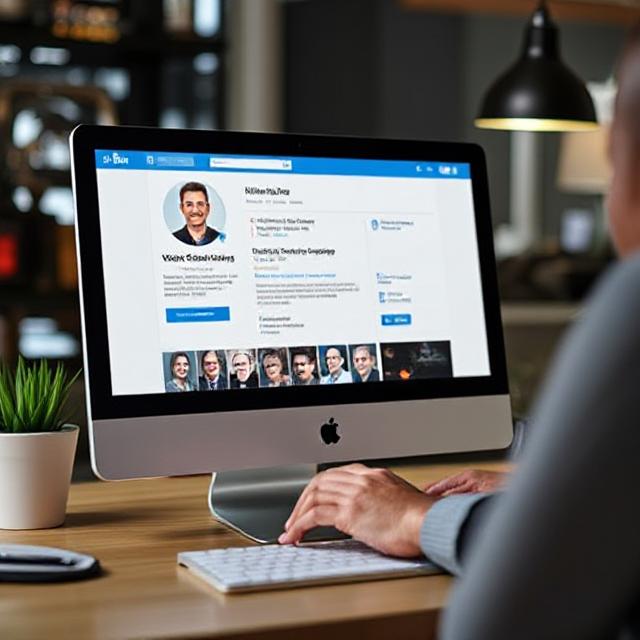Master Your LinkedIn Profile: A Guide to Optimizing for Success with our LinkedIn profile optimization tips
In today’s digital landscape, your LinkedIn profile is more than just an online resume; it’s a powerful personal brand-building tool and a hub for professional networking. For those in affiliate marketing, it’s a prime opportunity to establish authority, connect with a target audience, and drive conversions.
But simply having a profile isn’t enough. To truly succeed, you need a profile that is meticulously optimized to attract the right people and guide them toward your affiliate products and services. This detailed guide will walk you through the essential tips for optimizing your LinkedIn profile, turning it into a lead-generating machine.

The Foundation: Your Profile’s First Impression
First impressions are everything. When someone lands on your profile, you have a matter of seconds to capture their attention and convince them to stay.
Professional Profile Photo and Banner
Your photo should be a high-quality, professional headshot with a friendly, approachable expression. Avoid selfies, outdated pictures, or distracting backgrounds. Your banner image is an underutilized piece of digital real estate. Use it to visually reinforce your personal brand, showcase your expertise, or even include a concise, value-driven message.
A Killer Headline
This is your personal elevator pitch. Instead of just stating your job title, use a formula that combines what you do, who you help, and how you provide value. For example, instead of “Affiliate Marketer,” try “Affiliate Marketing Strategist | Helping businesses grow their online presence with data-driven marketing solutions.” Include relevant keywords that your target audience would use to find you.
The “About” Section: Your Professional Story
This is your chance to tell a compelling story, not just list your accomplishments. Write in the first person and focus on your journey, your expertise, and how you can solve your audience’s problems. Use bullet points and short paragraphs to make it scannable, and strategically weave in keywords throughout the text.
Building Trust and Authority
Affiliate marketing thrives on trust. Your LinkedIn profile must serve as proof that you are a credible expert in your field.
Experience Section: Go beyond just listing your job duties. Quantify your achievements with numbers and metrics. Instead of “managed social media,” write “managed social media campaigns that resulted in a 30% increase in lead generation.” This shows tangible results and makes you a more attractive partner or resource.
Showcase Your Skills and Endorsements: The skills section is crucial for searchability. List all relevant hard and soft skills. The more endorsements you have from your connections, the more credible you appear. Don’t be afraid to ask colleagues and clients for recommendations and endorsements.
Recommendations: These are powerful social proof. A genuine recommendation from a former manager, colleague, or client can speak volumes about your work ethic and expertise. A well-written recommendation that highlights a specific project or skill is invaluable.
Turning Your Profile into a Conversion Funnel
Once your profile is optimized, you need to actively use it to drive traffic and convert leads. This is where affiliate marketing comes into play.
The Featured Section: This is the perfect place to showcase your best work. Use it to highlight your affiliate blog posts, a case study on a product you promote, or a video review. You can link directly to your affiliate landing pages from this section.
Strategic Content Creation: Post consistently and provide genuine value. Use a mix of content types, including text posts, articles, and videos. The “80/20 rule” is a great guideline: 80% of your content should be valuable, educational, or engaging, while 20% can be promotional. Share industry insights, how-to guides, and personal experiences. This builds your reputation as a thought leader and keeps your audience engaged.
Engage with Your Network: Don’t just post and disappear. Comment thoughtfully on other people’s posts, participate in relevant LinkedIn groups, and respond to every comment you receive. This boosts your visibility and helps you build a community around your brand.
The Call to Action (CTA): The Final Piece of the Puzzle
Every part of your profile should be designed to guide the visitor to a desired action. Without a clear CTA, all your optimization efforts will fall flat.
In Your “About” Section: End your professional story with a clear, concise CTA. For example, “Want to learn more about how I help businesses thrive? Visit my website at [https://www.google.com/search?q=YourWebsite.com] for a free guide on affiliate marketing strategies.”
In Your Posts and Articles: Each piece of content you create should have a purpose. End your articles with a CTA like “Ready to get started? Click here to grab your free trial of [Product Name] and unlock your potential!” or “Download my exclusive checklist for optimizing your own LinkedIn profile by clicking the link in the comments!”
Use the Custom Profile Button: LinkedIn allows you to add a custom button to your profile. Use this to link directly to your affiliate’s landing page, your blog, or a specific lead magnet. Options include “Visit my website,” “View my portfolio,” or “Subscribe.”
Ready to Revolutionize Your LinkedIn Profile?
Don’t let your LinkedIn profile be a missed opportunity. By implementing these detailed tips, you can transform it from a static resume into a dynamic, engaging, and profitable tool. Establish your authority, build a loyal audience, and drive conversions like never before.
Ready to start turning connections into conversions? Download my free guide, “The Affiliate Marketer’s LinkedIn Blueprint,” and unlock the secrets to a high-converting profile today!




